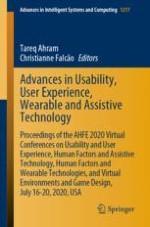2020 | OriginalPaper | Buchkapitel
The Impact of Eye Tracking Technology
verfasst von : Roland Paul Nazareth, Jung Hyup Kim
Erschienen in: Advances in Usability, User Experience, Wearable and Assistive Technology
Aktivieren Sie unsere intelligente Suche, um passende Fachinhalte oder Patente zu finden.
Wählen Sie Textabschnitte aus um mit Künstlicher Intelligenz passenden Patente zu finden. powered by
Markieren Sie Textabschnitte, um KI-gestützt weitere passende Inhalte zu finden. powered by
